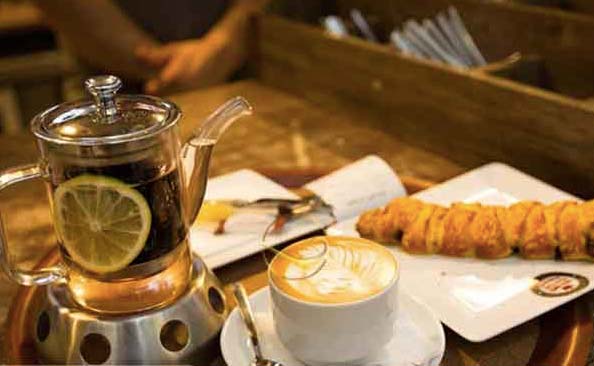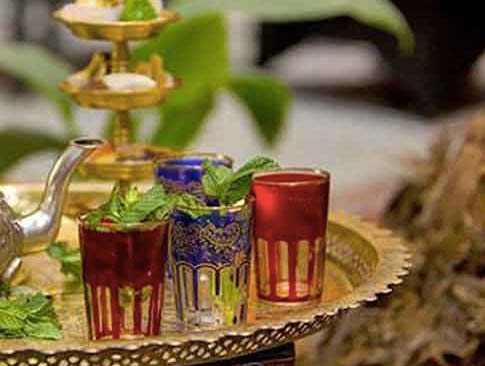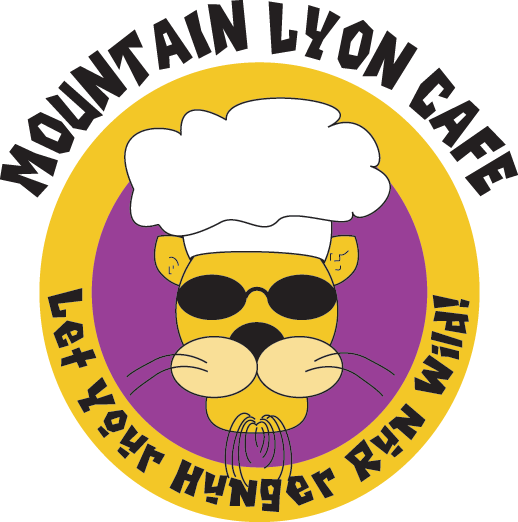Are you an adventurous coffee lover looking to take a deeper dive into the world of specialty coffee? If so, Exploring Coffee Tradition in Iran is an excellent place to start your journey. Here in Iran, centuries-old traditions steeped in ritual and ceremony are still alive today making it one of the most fascinating and unique places to explore coffee tradition.
From traditional brewing methods like qahvehdari neshini (coffee with spices) to modern cafes popping up throughout Tehran, there’s something for everyone when it comes to experiencing Iranian coffee tradition.
In this blog post, we’ll be taking a look at all facets of Persian coffee traditions from their historical significance and ancient rituals to current trends and modern café scenes. Let’s get started on our tour!
What is a Coffee Tradition in Iran?

Coffee tradition can be defined as a set of behaviors, values, and attitudes surrounding the consumption of coffee. Coffee is much more than just a beverage in Iran; it’s an integral part of life.
Drinking coffee is about much more than simply sipping on a cup rather, it’s an experience shared by many and steeped in tradition. From the way coffee is prepared and served to the ritualistic manner in which it is consumed, Iranian tradition is deeply entrenched in an appreciation for this beloved beverage.
Exploring Coffee Tradition in Iran

When it comes to exploring the coffee tradition of Iran, there are many different aspects to consider. It is important to understand the traditional brewing methods and rituals that make Persian coffee so unique.
In Iran, qahvehdari neshini (coffee with spices) is a popular way of preparing coffee that has been practiced for centuries. This method involves grinding cardamom, cinnamon, and aniseed together with coffee beans to create a special blend. The blend is then boiled over high heat before serving in small cups.
Related article:
How is Cold Brew Technology Evolving?
An Overview of Coffee Drinking Tradition in Iran
Coffee consumption has been an important part of Iranian tradition for centuries. Coffee drinking is deeply entrenched in Persian traditions and rituals, often taking place during special occasions like weddings or religious celebrations. In addition to being enjoyed as a social activity, coffee is also used medicinally to treat ailments like headaches and digestive issues.
In Iran, coffee is traditionally brewed with a qahvehdari neshini. This special pot is specifically designed to make coffee and consists of a pewter bottom, copper top, and spout. Ground coffee is added to the copper top along with water and spices like cardamom or saffron. The mixture is then heated over an open flame until it boils and the aromatic smoke fills the room.
The History of Coffee Tradition in Iran
The history of coffee drinking in Iran goes back centuries. Legend has it that the first cup of coffee was brewed by an Iranian man who discovered its energizing effects when he noticed goats eating coffee beans and becoming more alert. But it wasn’t until the late 15th century that coffee drinking spread throughout Iran, where it quickly became a popular beverage among the upper classes.
In the early 17th century, a coffee house opened in Isfahan a city in central Iran. This shop sparked a wave of coffee house openings throughout Iran that eventually became part of everyday life and tradition. These cafes were social hubs where people gathered to discuss literature, poetry and politics. Coffee houses also served as meeting places for merchants who traveled between cities to conduct business.
How to Make Traditional Iranian Coffee
Making traditional Iranian coffee is an art form and a ritual that has been passed down through generations. Here’s how to make qahvehdari neshini, the classic Persian-style brew:
- Fill the bottom half of the qahvehdari neshini pot with water and add your desired spices like cardamom or saffron.
- Place the top half of the pot over a low flame and let it heat up for a few minutes.
- Add freshly ground coffee to the top half of the pot and stir gently with a spoon until all of the grounds are mixed in.
- Heat for several minutes, stirring occasionally, until you see bubbling at the sides of the pot and fragrant smoke begins to rise.
- When it’s ready, remove from heat and let the grounds settle for a few minutes before pouring into cups.
A Brief History of Coffee in Iran and its Impact on the Tradition
Coffee drinking has been an integral part of Iranian tradition for centuries. This deeply held tradition has had a major impact on the social and cultural life of the country. Coffee houses have served as meeting places for merchants, scholars, writers and poets, offering a place to gather and discuss literature, politics and philosophy. They’ve also provided a safe space for women to socialize and develop friendships.
Today, specialty coffee shops are popping up throughout major cities in Iran. These shops offer a variety of beverages and snacks made with local ingredients, providing a more modern take on the traditional coffee house experience. Specialty cafes are becoming popular hangout spots for young people, offering a safe and comfortable place to socialize and connect with one another.
Traditional Brewing Methods and Popular Drinks in Iran
In addition to the popular qahvehdari neshini brewing method, there are a variety of other ways to make coffee in Iran. The mocha, or Turkish-style coffee is a popular one this method involves boiling ground coffee with sugar and spices, then straining it through a cloth filter before serving. Cold brew and espresso are also gaining in popularity, as well as modern brewing methods like pour-over and French press.
Exploring the Different Regional Variations of Coffee Preparation
Coffee tradition varies by region in Iran, with each area having its own unique traditions and brewing methods. In the northern regions of Gilan and Mazandaran for example, gahve shireen (sweet coffee) is a popular beverage made with cinnamon, saffron, cardamom and rose water.
This type of coffee is usually served at weddings and special occasions. In the western part of Iran, coffee is often made with tea leaves as well as spices. The southeastern regions of Iran are known for their strong, bitter brews made by boiling the grounds until they separate from the water.
Tips for Making the Perfect Cup of Persian Coffee at Home
Making the perfect cup of Persian coffee at home is easier than you might think. Here are some tips for creating a delicious, aromatic brew:
- Start with freshly ground, high-quality coffee beans and grind them right before brewing.
- Use filtered water to make sure your coffee doesn’t have any unpleasant tastes or odors.
- Heat the coffee pot over low heat for even cooking, and stir occasionally with a wooden spoon to prevent the grounds from sticking to the bottom.
- Add your desired spices to give the brew an extra aromatic flavor.
- Let the mixture sit for a few minutes after boiling so that all of the grounds settle at the bottom of the pot.
- Serve in small cups and enjoy with friends.
Coffee has been a part of Iranian tradition for centuries, and continues to play an important role in everyday life. Whether you’re enjoying a cup of qahvehdari neshini or exploring the different regional variations of coffee preparation, there’s no better way to experience this tradition than by making your own coffee at home.
Different Varieties of Coffee in Iran and How They’re Prepared
Coffee is more than just a drink in Iran – it’s an art form that has been passed down from generation to generation. Depending on the region, different ingredients are used to make unique varieties of coffee. Here are some of the different types and how they’re prepared:
- Qahvehdari neshini: This classic Persian-style brew is made by boiling ground coffee with spices like cardamom or saffron in a two-part pot.
- Mocha: Also known as Turkish-style coffee, this method involves boiling ground coffee with sugar and spices, then straining it through a cloth filter before serving.
- Cold Brew: This type of coffee is brewed with cold water and steeped for several hours for a smooth, mellow flavor.
- Espresso: Made with finely ground coffee beans and high-pressure steam, espresso is served in small shots and often topped with foam or steamed milk.
- Pour Over: This slow brewing method involves pouring hot water over freshly ground coffee in a filter.
- French Press: This method involves steeping coarsely ground coffee in hot water directly in a carafe before pressing the grounds to the bottom of the pot.
Where to Find the Best Cafes for a Unique Coffee Drinking Experience in Iran
If you’re looking for a unique coffee drinking experience in Iran, look no further! There are plenty of specialty cafes scattered throughout the major cities that offer a variety of beverages and snacks made with local ingredients. Here are some of our favorite spots to try out:
- Coffee Alley in Tehran: This quaint cafe serves up delicious espressos and cold brews made with freshly roasted beans.
- Gohar Coffee House in Shiraz: Enjoy a cup of traditional qahvehdari neshini and explore the wide selection of pastries and desserts available.
- Chai and Co. in Isfahan: This chic cafe offers up artisanal coffee drinks as well as a variety of teas from around the world.
- Cafe La Maison in Tabriz: Enjoy a cup of coffee while taking in the stunning view of the city’s historic bazaar.
Whether you’re looking for traditional brewing methods or modern takes on old classics, there are plenty of places to explore Iran’s unique coffee tradition. So grab a cup and start exploring!
Common Etiquette Tips for Enjoying a cup of Coffee in Iran
Coffee is more than a beverage – it’s an experience. To get the most out of your coffee drinking experience, here are some tips to keep in mind:
- When you’re offered a cup of qahvehdari neshini, make sure to thank the person who serves it to you with appreciation.
- If you’re served a cup of coffee with sugar, make sure to ask for it before adding any. It’s considered impolite to add your own without prior permission.
- Avoid slurping or making loud noises while drinking your coffee – this is seen as rude in Iran.
- If you’re enjoying coffee with friends, keep the conversation light and respectful – avoid topics like politics or religion.
- Most importantly, enjoy your coffee and savor the warmth of each sip!
From traditional qahvehdari neshini to modern espresso drinks, there is something for everyone in Iran’s rich coffee tradition. Whether you’re exploring local cafes or enjoying a cup at home, following these etiquette tips will help ensure that you have a pleasant experience.
Exploring Non-Coffee Beverages Popular Among Iranian Drinkers
Coffee isn’t the only drink that Iranians enjoy – there are plenty of other beverages popular among locals. Here are some of the most popular non-coffee drinks to try out:
- Doogh: This refreshing yogurt drink is made with mint, spices and soda water, perfect for a hot summer day.
- Sharbat: Also known as “fruit punch,” this fruity beverage is made with a variety of seasonal fruits and fragrant flowers like rose or orange blossoms.
- Chai: This milky tea is brewed using black tea leaves, sugar, cardamom and cinnamon for an aromatic flavor.
- Lemonade: Iranians love to cool down with a glass of freshly-squeezed lemonade sweetened with syrup.
- Sweet Vermouth: This syrupy beverage is made with a variety of herbs and spices, commonly enjoyed after dinner.
Whether you’re exploring Iran’s vibrant cities or sitting in the comfort of your own home, these non-coffee drinks are sure to tantalize your taste buds!
Discovering Special Occasions When Coffee is Served as a Symbol of Hospitality in Iran
Coffee is more than just a beverage in Iran – it’s a symbol of hospitality and friendship. In the local tradition, making and sharing coffee is seen as an act of kindness, care, and respect. Here are some occasions when coffee is served to show appreciation:
- Weddings: Coffee has been a part of Iranian wedding tradition for centuries. It is served to guests as a sign of respect and hospitality.
- Religious Holidays: During religious celebrations like Nowruz (Persian New Year) or Ramadan, coffee is served for visitors to show gratitude for their presence.
- Business Meetings: In many Iranian companies, it’s customary to offer coffee to guests as part of the introduction.
- Visiting Friends and Family: When visiting family or friends, it’s polite to offer coffee as a sign of respect and appreciation for their hospitality.
From business meetings to religious festivals, coffee is an integral part of Iranian tradition. By understanding the local etiquette around drinking coffee, you can show your thankfulness and appreciation in the most meaningful way!
I’m Kara Chavez, and I love coffee. I like to create some of the best coffees around – espressos, lattes, macchiatos – you name it. I strive for perfection in my coffee-making skills, and I take great pride in providing a delicious cup of joe to my customers.
I’ve been working in the coffee industry for years now, and I know everything there is to know about making a perfect cup of coffee. My passion for coffee shines through in every cup that I make, and I hope that you’ll stop by soon so that I can share my love of coffee with you!

